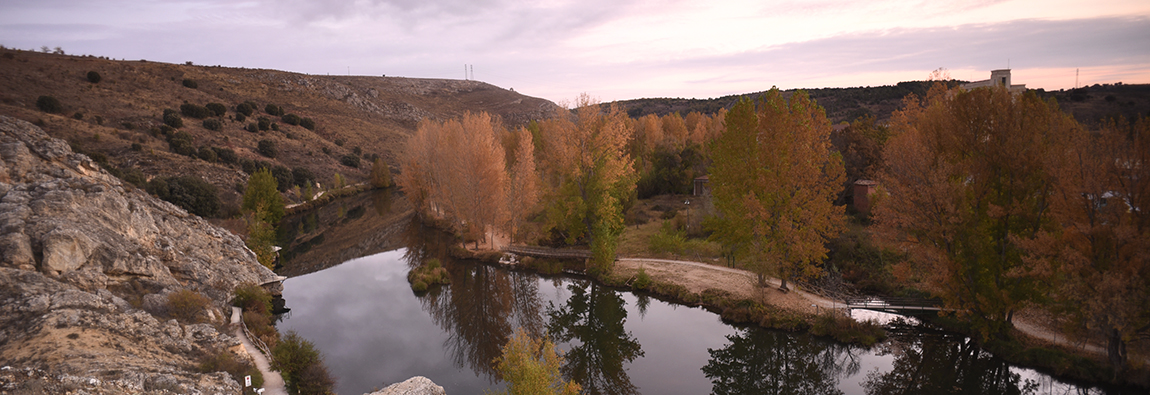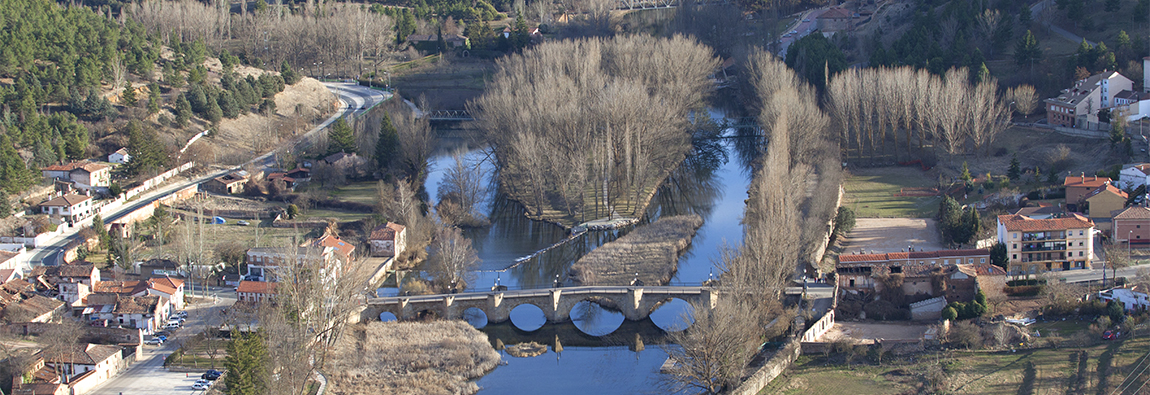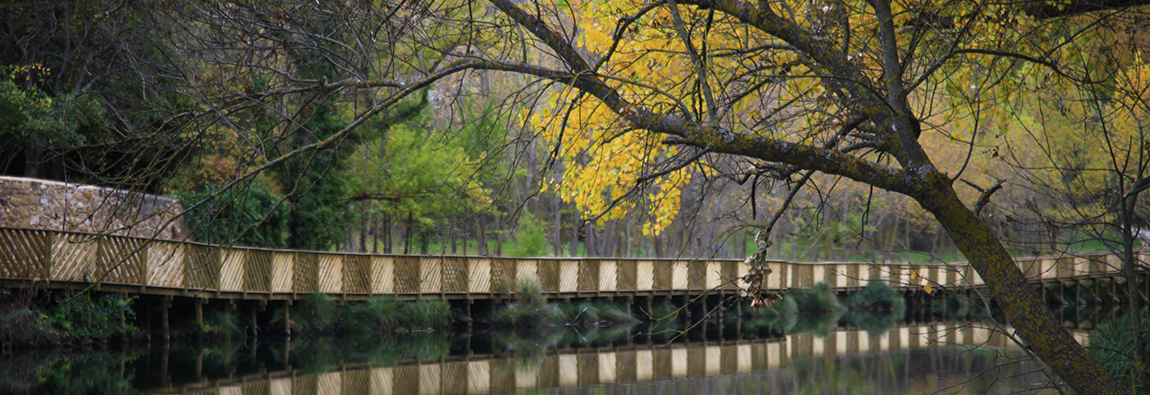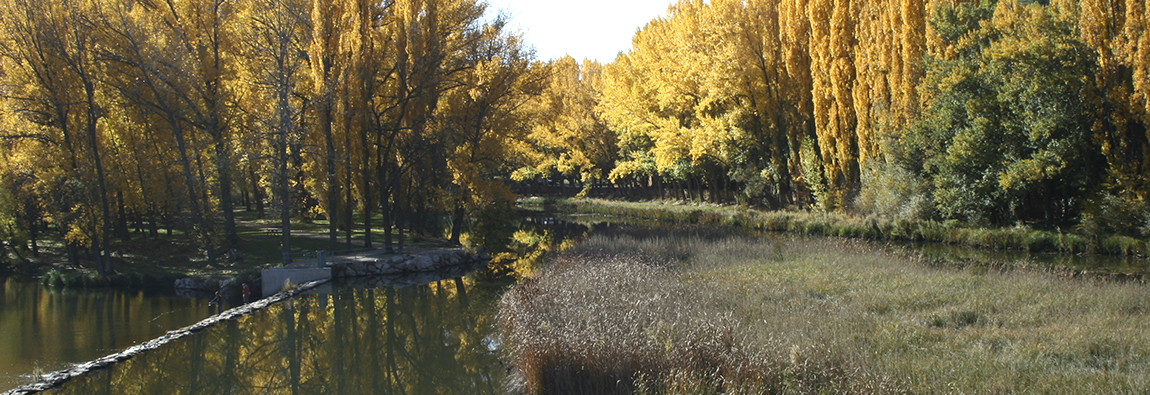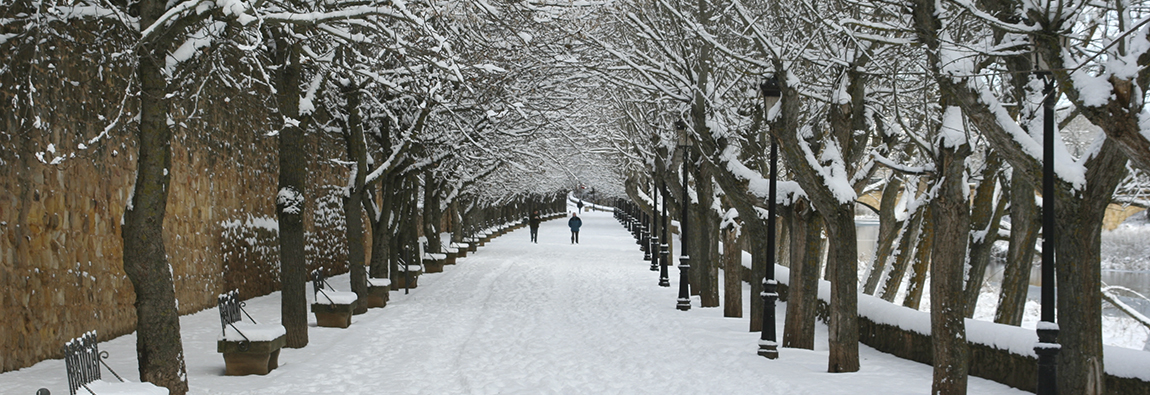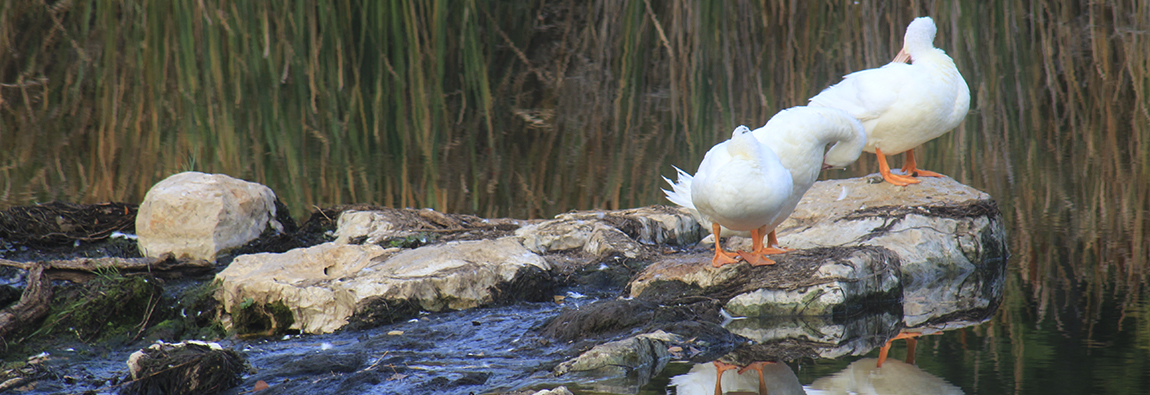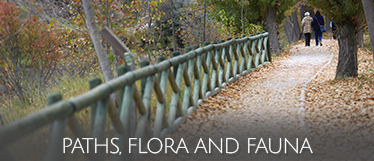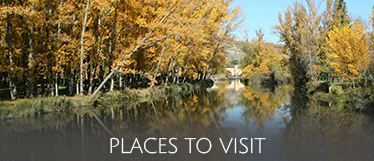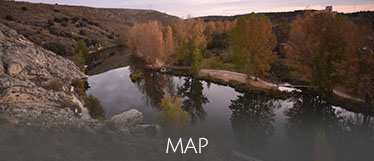
River Duero Banks
WHERE THE RIVER HUGS THE CITY
The different improvement works on the river banks have given an infrastructure to this area that has turned into the leisure area for locals and foreigners: The San Prudencio Promenade with all its garden areas and different areas related to environment, the Ecocentre, the Wheel, the Water museum and the Machado Promenade.
It adds an essential aspect very linked to river Duero, its natural values.
First of all the geology of its surroundings, like the Santa Ana Hill.
On the second pace, the physiognomy of the river with its dams. On the third place, the characteristic plants of the banks such as poplars, willows, crack willows… to which we must add the hillsides of the surrounding hills, mostly holly oaks, even if there are also many bushes typical from degraded ground and some reforestation of conifers and wattles on the hills of the Castle. And of course fauna, both from the water (forkbeard, trout, roach, crab, frog, dragonfly, coot, heron, otter…) and from the ground (lizard, booted eagle, griffon vulture, sparrowhawk, badger, deer…).
The park also has recreational areas for children furnished with swings for children two bars and restaurants.
PLACES TO VISIT
On the river Duero banks there are several monumental places to see and visit as the stone bridge of medieval origin, next to the San Juan de Duero Monastery where you can admire a mix of artistic styles of the medieval ages with round archs, pointed, intertwined, califal, etc.
A few metres away we can see the medieval coolers given that until the industrial revolution came, the only way to have ice all year long was to introduce and compact the snow when it fell on wells until they were full. Down the river the Sotoplaya is the isle formed between the two arms of River Duero, the San Polo Monastery where, as tradition says, the templar knights decided to settle. On the Machadian walk we leave behind the metallic structures of the Iron Bridge and at the end, the Hermitage of San Saturio, patron saint of the city, erected on a cave. On the other bank of the river it is worth visiting the wool washery and the Sotoplaya.
This place where art and nature merge amazes and touches everyone visiting it; and many poets had a literary look on it like Becquer, who sets in San Polo one of his romantic legends and behing San Juan de Duero his templar legend of “El Monte de las Ánimas”(Mount of souls) and Antonio Machado gave it its romantic touch with his poems,









